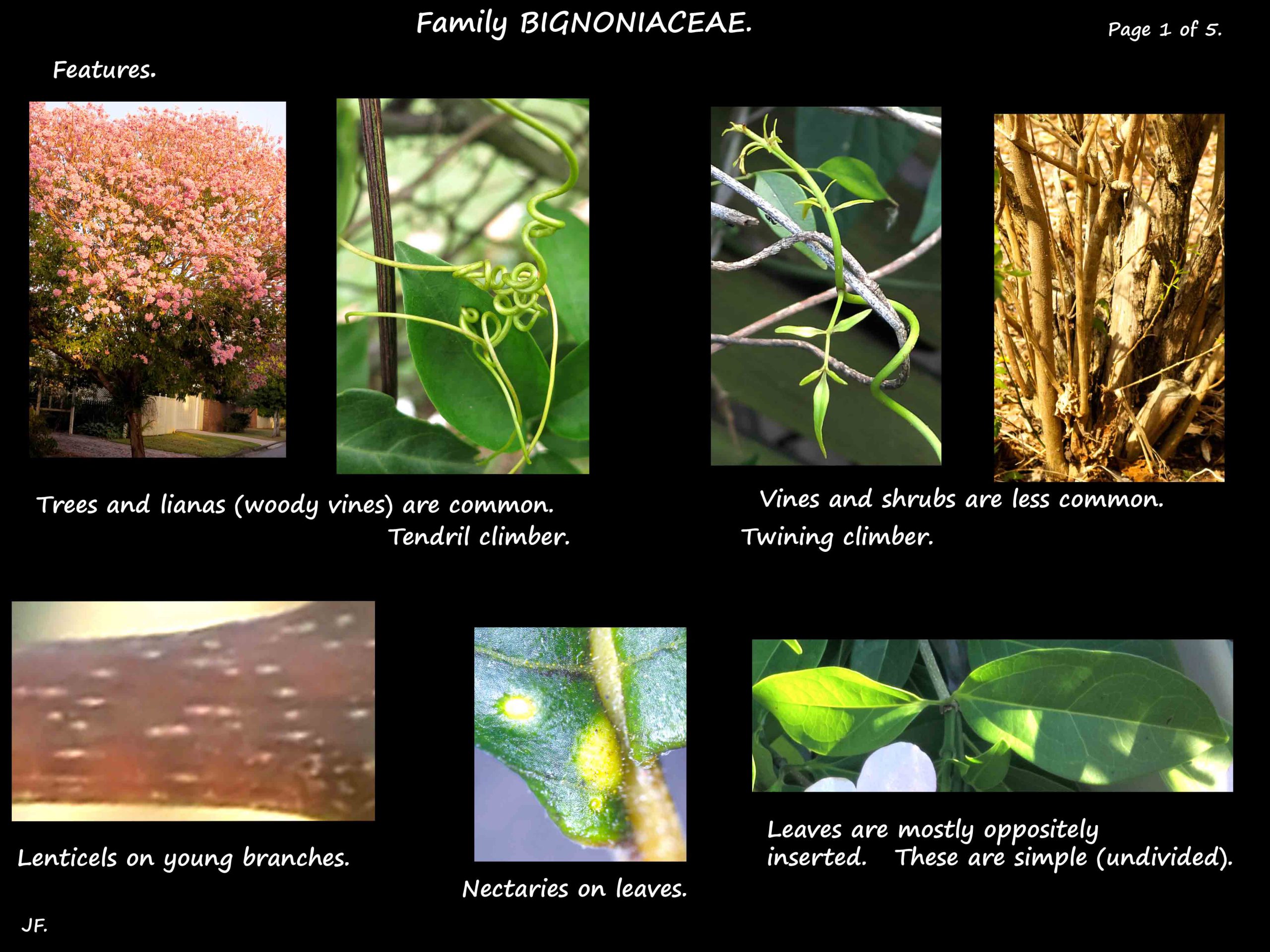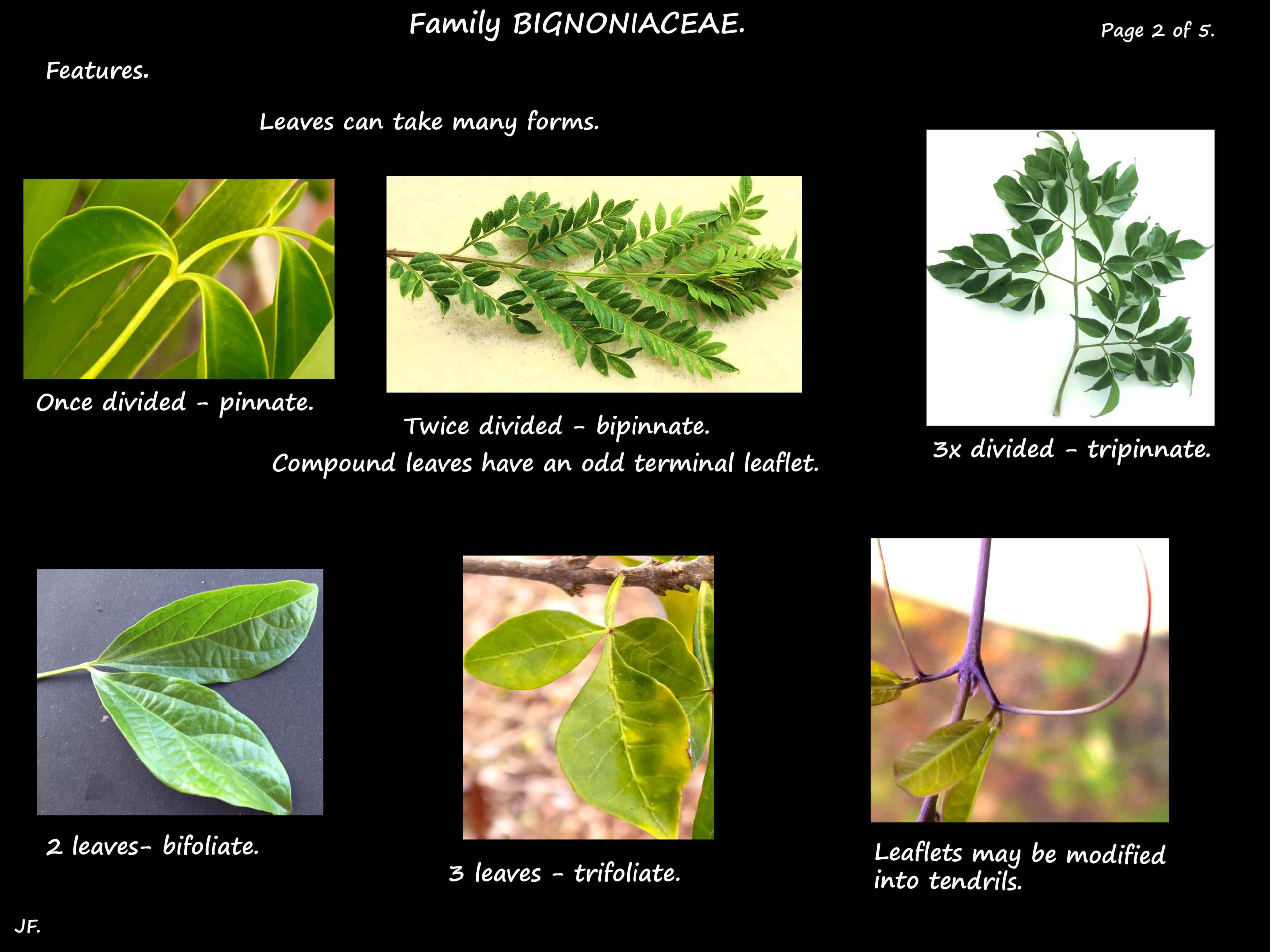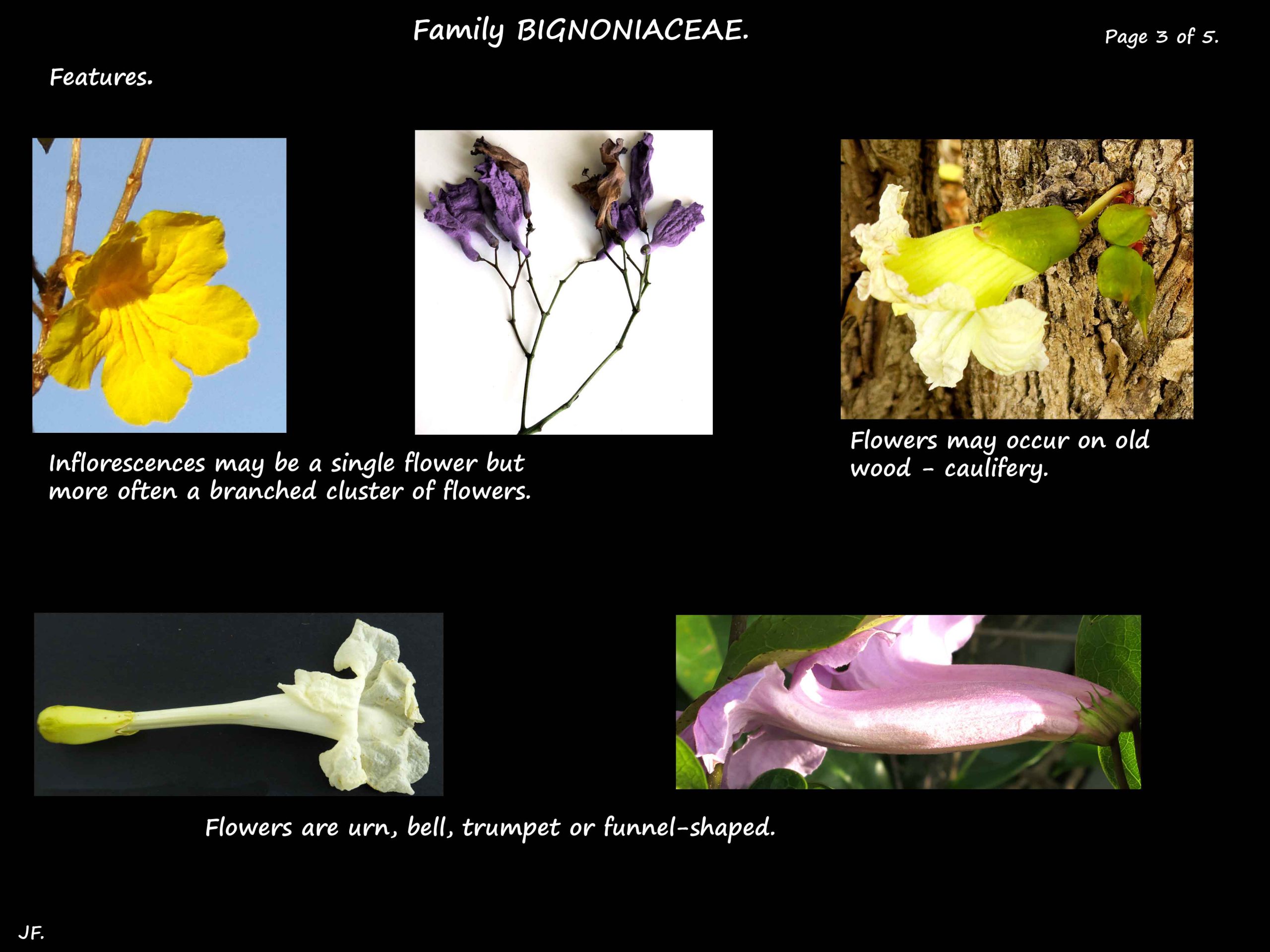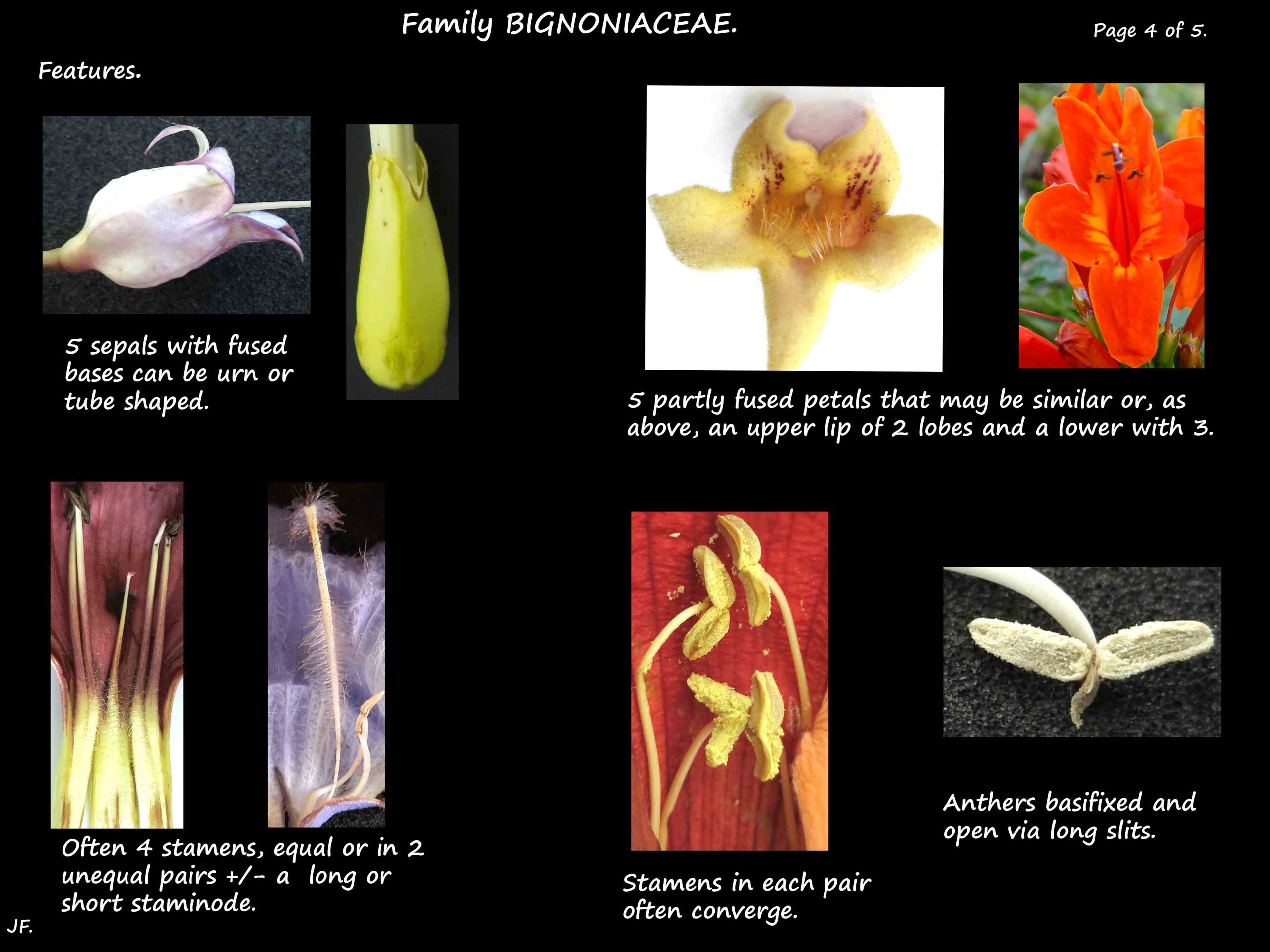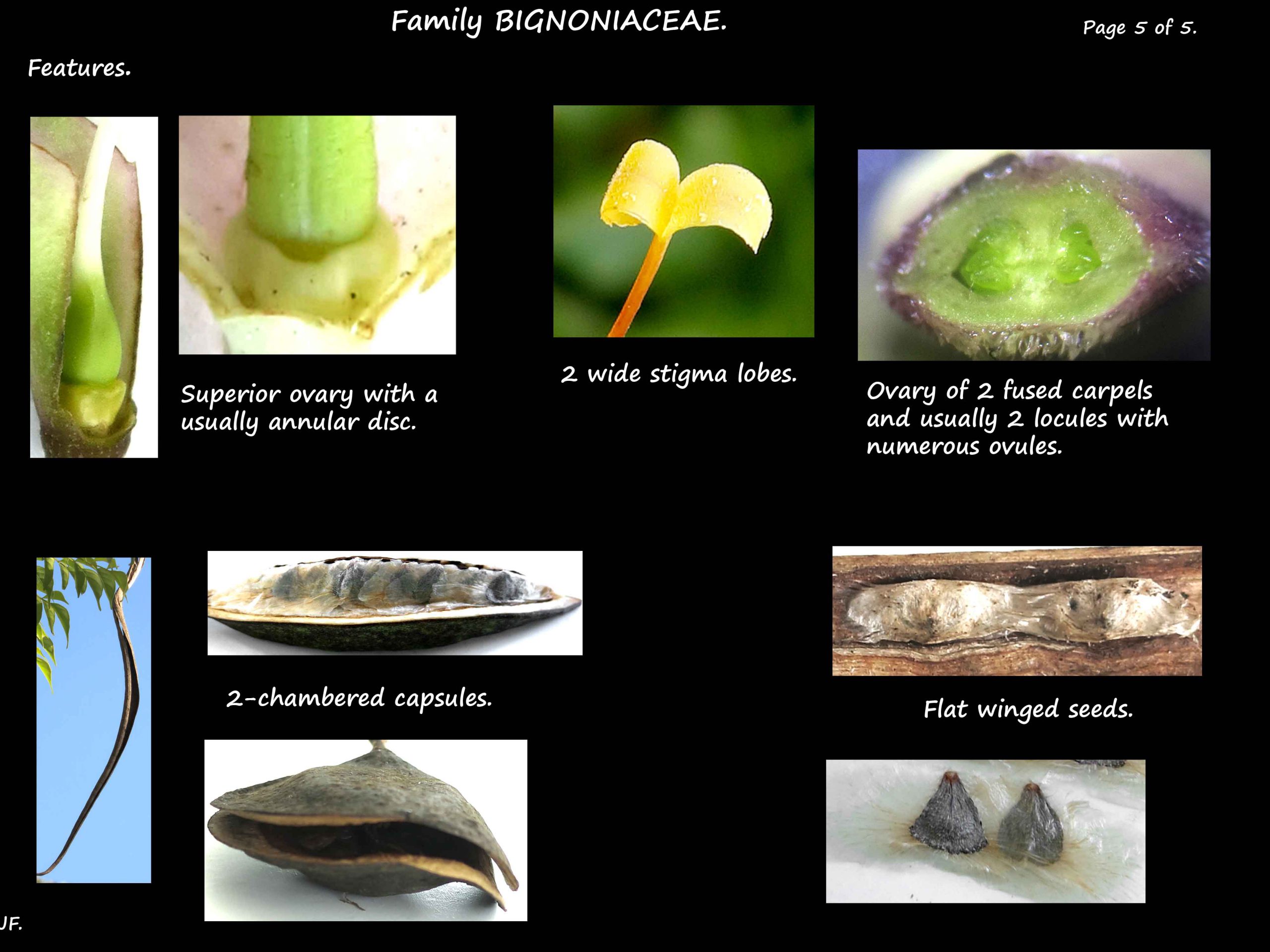Bignoniaceae family.
The family has 80 to 85 genera (80 – 120) and 650 to 860 species.
Australia has 10 genera and 17 species.
Slightly different classifications seem to be used that have 8 or 10 groups, tribes,
clades and alliances plus a few unassigned genera. The groups are:
- Jacarandeae including Jacaranda.
- Tourrettieae.
- Tecomeae inc. Campsis, Incarvillea, Pandorea, Podranea, Tecoma and Tecomanthe.
- Bignonieae inc. Bignonia, Dolichandra, Mansoa and Pyrostegia.
- Catalpeae inc. Catalpa and Chilopsis.
- Oroxyleae inc. Millingtonia.
- Crescentieae (others divide this into the Tabebeuia alliance with Crescentia, Parmentiera
and Tabebuia and the Paleotropical clade with Dolichandrone, Kigelia, Markhamia,
Radermachera, Rhigozum and Spathodea). - Coleeae.
Bignoniaceae features.
Most plants are woody trees or lianas (woody vines) that climb by tendrils or twining.
There are a few shrubs and rarely herbs.
Stems have lenticels (small raised areas on young stems).
Leaves, on petioles, are most commonly opposite, rarely alternate or in whorls of 3 or 4.
Mostly pinnate but they can have 2 or 3 leaflets, be palmate or occasionally simple.
Sometimes leaflets are modified into tendrils.
There are no stipules but the scales on the axillary buds may be large.
The area between the petiole bases often has a ridge or glands.
Inflorescences are mostly terminal consisting of solitary or clustered flowers.
Sometimes an axillary inflorescence can have small leaves so may actually be terminal.
Inflorescences have bracts.
Flowers, mostly with parts in 5’s, are bisexual and tend to be irregular in shape.
There is usually a hypogynous disc around the ovary and it is mostly annular.
Nectaries are often seen on the tips of young leaves, on the stem nodes, calyx and ovary.
The tubular or bell-shaped calyx has 5 sepals with a flat or 5-lobed rim.
Sepals may be of unequal sizes and a few genera have a spathe-like calyx.
The tubular or bell-shaped corolla has 5 petals.
The 5 terminal lobes may be short or up to half the length of the tube.
All lobes may all be similar but are often divided into an upper lip of 2 lobes and a
lower lip with three (bi-labiate).
There are mostly 4 stamens in 2 pairs of unequal lengths +/- an infertile staminode.
The staminode is usually shorter than the fertile stamens but can be longer.
There can also be 4 or 5 fertile stamens or 2 fertile stamens with 3 staminodes.
They are inserted onto corolla tube and alternate with the corolla lobes.
Stamens in each pair often lie close to each other.
Anthers are basifixed and dehisce via longitudinal slits.
The superior ovary has 2 fused carpels and usually 2 locules.
Occasionally there is only 1 locule or 4 where there are false septa.
There are numerous ovules in each locule with axile placentation.
There is an apical style with 2 wide stigmatic lobes.
Fruit are mostly 2-chambered loculicidal or septicidal capsules with flat, winged seeds.
With such a large family there are exceptions to many of the above.
J.F.

